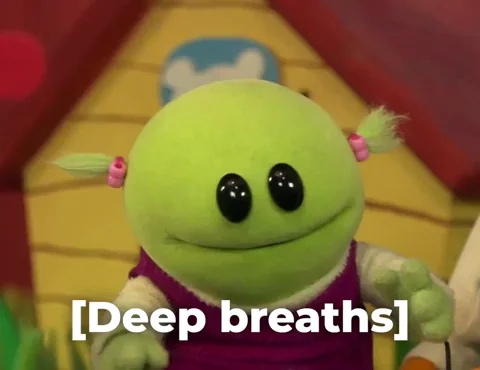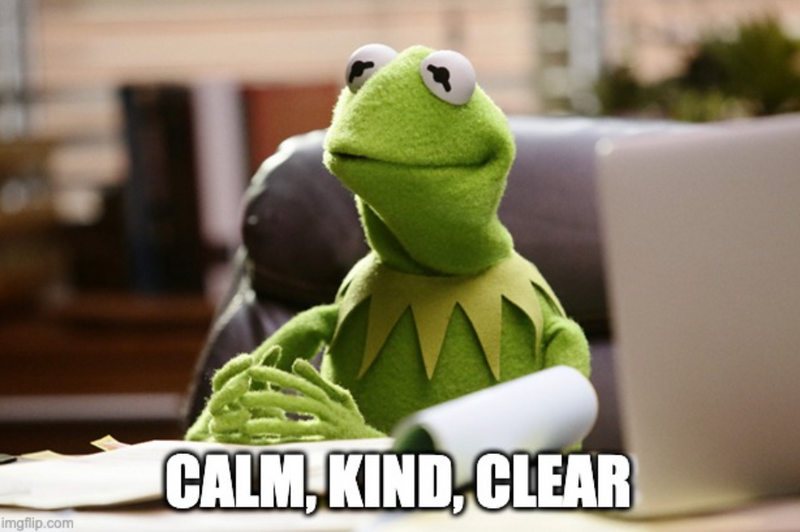Ever felt your chest tighten before a hard conversation with a family member? That mix of nerves, frustration, or fear can throw you off before you even start.
These 5 mindfulness exercises can help you enter the conversation prepared to stay calm, grounded, and focused — so you show up as your best self, even when it’s hard.

Why Have a Difficult Conversation?
Difficult conversations can lead to:
Stronger relationships: Addressing concerns openly can help resolve long-standing issues and strengthen trust.
Better understanding: Discussing sensitive topics can lead to new perspectives and deeper empathy.
Personal growth: These conversations push you out of your comfort zone and help you learn better communication strategies.

Reminder: You’re preparing for this conversation because the relationship matters. You can’t control how the other person reacts, but you can choose how you show up. Mindfulness exercises will help you make this choice.
Mindfulness Exercise 1: Notice What's Happening Inside
Before planning what to say, pause and check in with yourself. This mindful exercise creates space between your emotions and your reactions.
Check in with yourself: Ask, “What am I feeling right now?” and “Why am I feeling this way?” Naming your emotions can help you respond more intentionally.
Breathe and center your emotions: Take a few deep breaths to calm your nervous system and steady your thoughts.
Focus on a resolution: Focus on finding a solution rather than winning an argument.

Mindfulness Exercise 2: Set a 3-Word Intention
Once you’ve checked in with yourself, set a simple intention for how you want to show up.
An intention is a guiding mindset — it's a mindfulness exercise that helps you stay grounded and act in line with your values, even if the conversation gets tough.
Examples:
“Steady, open, honest”
“Curious, direct, respectful”
Read it before the conversation. If emotions rise, return to these words to stay anchored.

Mindfulness Exercise 3: Focus on One Issue
Bringing up everything at once can feel overwhelming. It may cause the other person to shut down or get defensive. Focusing on just one issue makes it easier to stay calm and actually solve the problem.
Start with the most pressing issue — the one that’s bothering you the most or affecting the relationship the most right now.
For example: Your sibling teases you and takes your things without asking.
Instead of covering both, you might say:
"I want to talk about you using my stuff without asking. It makes me feel disrespected, and I’d like us to come up with a better system."

Quiz
Kevin needs to talk to his brother about eating his food and borrowing his stuff. What’s the best way to handle it?
Mindfulness Exercise 4: Prepare Your Talking Points
It helps to write down what you want to say. Try organizing your thoughts using these questions:
Who is involved in the issue?
What happened in the moment? Where and when did it happen?
How did the situation make you feel?
Why is it important to for you to bring it up?
How might the other person feel?
What solution do you want to suggest?
Being thoughtful about both your point of view and theirs shows maturity and lowers defensiveness.

Mindfulness Exercise 5: Use Healthy Communication Techniques
Family conversations can bring up old patterns. Mindful communication means noticing your thoughts and reactions — and choosing to respond, not react.
Try these strategies:
Know what to address and how: If the issue is ongoing or affects your well-being, it’s worth addressing.
Look at the argument from a different perspective: Assume others may want the best too, even if their approach is different.
Stay honest and kind: Share your feelings clearly without blame.
Give the other person their chance: Listen without interrupting, and ask for the same in return.
Be clear with your boundaries: It's okay to set limits to "protect your time, energy, and feelings."

Take Action

Before your next family conversation, use mindfulness exercises to prepare:
Your feedback matters to us.
This Byte helped me better understand the topic.
